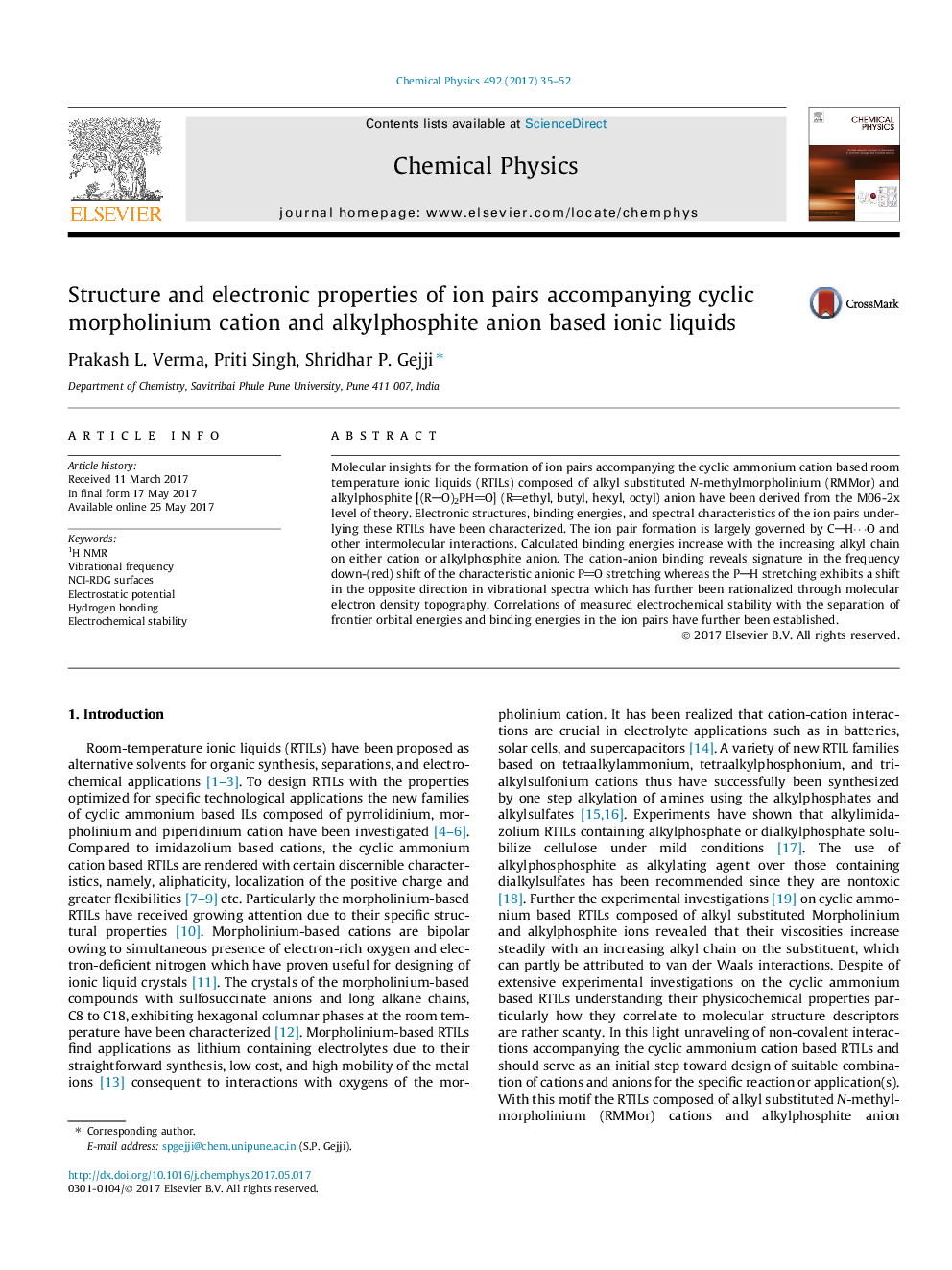| کد مقاله | کد نشریه | سال انتشار | مقاله انگلیسی | نسخه تمام متن |
|---|---|---|---|---|
| 5372591 | 1504179 | 2017 | 18 صفحه PDF | دانلود رایگان |
- Longer alkyl substituent on either cation or anion in RTILs led to stronger binding.
- Ion-pairs formation show signature in frequency shifts of PO and PH vibrations.
- QTAIM theory combine with difference MED plots explain such frequency shifts.
- Electrochemical stabilities correlate well with binding energies and LUMO energies.
Molecular insights for the formation of ion pairs accompanying the cyclic ammonium cation based room temperature ionic liquids (RTILs) composed of alkyl substituted N-methylmorpholinium (RMMor) and alkylphosphite [(RO)2PHO] (Rethyl, butyl, hexyl, octyl) anion have been derived from the M06-2x level of theory. Electronic structures, binding energies, and spectral characteristics of the ion pairs underlying these RTILs have been characterized. The ion pair formation is largely governed by CHâ¯O and other intermolecular interactions. Calculated binding energies increase with the increasing alkyl chain on either cation or alkylphosphite anion. The cation-anion binding reveals signature in the frequency down-(red) shift of the characteristic anionic PO stretching whereas the PH stretching exhibits a shift in the opposite direction in vibrational spectra which has further been rationalized through molecular electron density topography. Correlations of measured electrochemical stability with the separation of frontier orbital energies and binding energies in the ion pairs have further been established.
54
Journal: Chemical Physics - Volume 492, 28 July 2017, Pages 35-52
